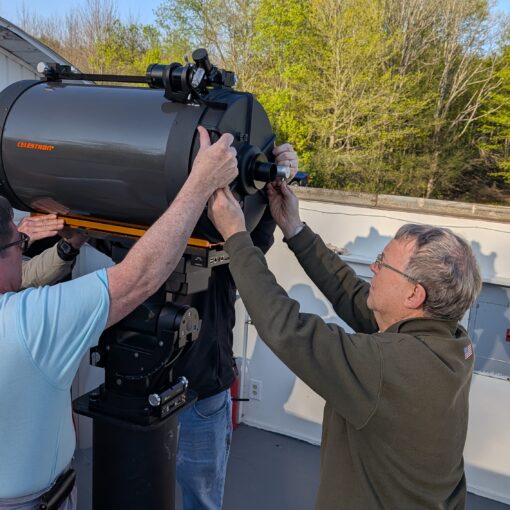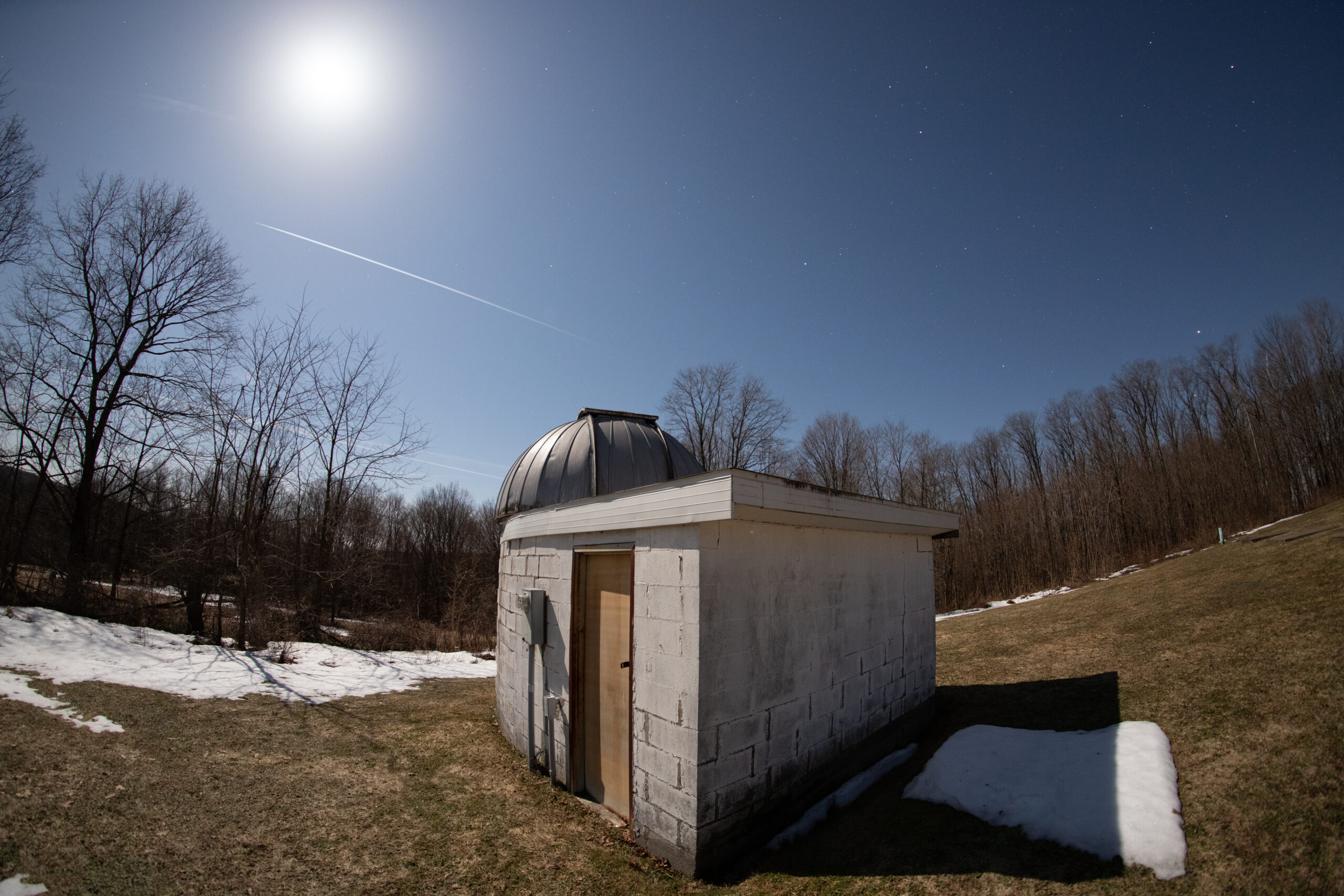A proposal passed, that allowed the Cave 16″ Newtonian telescope to be replaced with a telescope with more advanced features. The new telescope is a Celestron C14, which came with new imaging equipment and a new mount. This would allow members to use the telescope to switch between imaging and visual observations. The first photo taken was on Sunday night by John Rush and Jeff Higgins. It’s of the Crescent Nebula, located in the constellation Cygnus. The photo shows how capable the new tracking is, and the potential the new telescope has. Come join us next Friday on the 23rd, […]
Astrophotography
Despite some thin clouds messing with our view at the start of the night, the skies opened just before the starting phases. Totality lasted for just over an hour, with the partial phase ending just before 5AM. Five members attended, including a couple of guests during the night. The last total lunar eclipse visible here was in November 2022, with the next being in June 2029. A great time was had by all attended. The gallery will update with more photos as time goes on.
As much I love PixInsight for almost anything in regards to processing, for anyone that has used the blink tool to look at sub frames has likely discovered that it leaves a lot to be desired. It doesn’t de-bayer images, and it’s a bit cumbersome to “delete” images. I often find myself clicking the incorrect button and closing the entire stack of images, and then when you do manage to remove an image it stays in the list which can easily lead to confusion as to whether the light was actually removed. Recently I have been testing out ASI Studio […]
On 9/18/23 I drove up to Fair Haven State Park near Oswego in order to attempt to see the Aurora activity that night. As the skies looked to be clear I took a chance on the drive, unfortunately when I arrived there were a few too many clouds forming off the lake to really see the Aurora clearly. Still I got the DSLR out to take a time lapse. After a few minutes I noticed a strange phenomenon off to the west that went high over the lake and was not something I had seen before. It was not clouds […]


